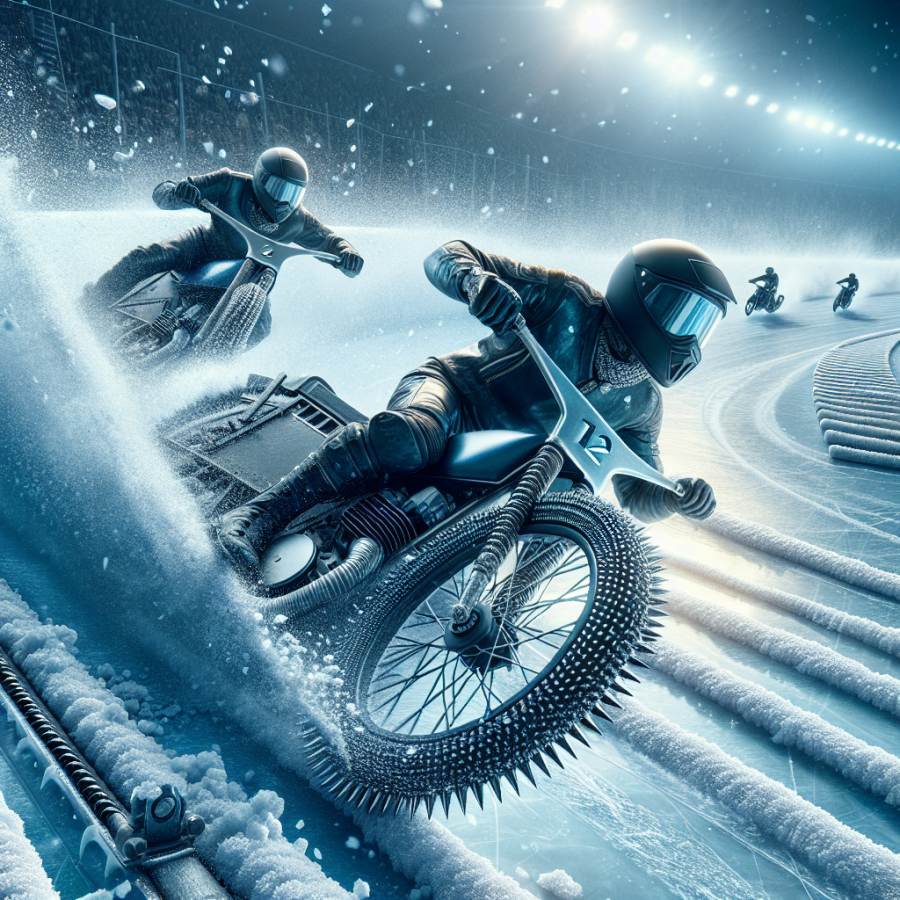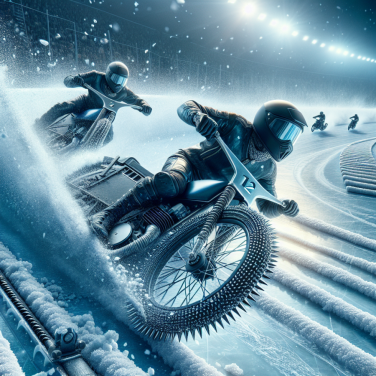Sliding into Adventure: The High-Speed Thrills of Ice Speedway Racing
Ice Speedway Racing is a sport where the term "chilling excitement" takes on a literal meaning. This high-octane endeavor combines the thrill of speed with the slippery challenge of ice, creating an environment where only the most skilled and daring racers dare to compete. As racers slide into the frost-laden arenas, they know that each race is not just another competition; it's an adventure on ice that pushes both machine and driver to their limits.
The sport takes place on oval tracks that are specifically designed or adapted for racing under winter conditions. These circuits are often covered with a thick layer of ice, offering minimal grip and demanding exceptional skill from the participants. Racers use specially modified motorcycles that differ significantly from their traditional speedway counterparts; the most noticeable modification is the presence of metal studs in the tires, which provide the indispensable traction required to carve through the icy surface.
One might think that these metal-studded tires would slow the bikes down, making the races less thrilling, but quite the opposite is true. The racers reach astonishing speeds, just barely below what one might experience on a traditional speedway dirt track. As the bikes tear around the bends, racers must constantly counter-steer to keep their machines on the icy surface, a technique known as “drifting,” that is as graceful as it is adrenaline-pumping.
The unique balance of speed and control is at the heart of what makes Ice Speedway Racing so exhilarating. The sight of motorcycles speeding around a track with their handlebars almost touching the ice and riders' legs stretched out to the side for balance is not only a display of breathtaking skill but also one of the sport’s most iconic images. The racers' ability to maintain high speeds in such treacherous conditions is a testament to their precision and athleticism.
Moreover, as with any high-stakes motor racing, the element of danger in Ice Speedway Racing cannot be overstated. The combination of high speeds, close quarters, and an unforgiving surface means that crashes, although unwanted, are part of the spectacle. Racers are well aware of the risks each time they don their protective gear and set out onto the ice. The protective equipment, which includes padded suits, helmets, and special guards, is of the utmost importance to shield the racers from serious injuries, should they have a spill.
One can't ignore the impact of the bitter cold environment on both the spectators and participants.
Read also:
Uncovering the Mysteries of Russia's Ancient Pyramids
Mastery on the Frozen Circuit: The Skills and Dangers of Ice Speedway Riding
Ice Speedway racing is a sport that combines high speeds, precision, and the unforgiving surface of ice, demanding an exceptional set of skills from its riders. To achieve mastery on this frozen circuit, riders must develop a deep understanding of the physics at play and refine various techniques to maintain control at breakneck speeds.
**Refined Balance and Control**: One of the most critical skills for an ice speedway rider is the ability to balance the bike on a surface that offers minimal traction. Riders must constantly adjust their body weight to negotiate turns while keeping the bike steady on the studded tires. The finesse required to keep these powerful machines under control on such a slippery surface cannot be overstated.
**Throttle Management**: Mastery of the throttle is crucial in ice speedway racing. The delicate interplay between too much and too little power can mean the difference between maintaining a lead and careening out of control. Riders must have a sensitive touch to manage the bike's power output, ensuring they can accelerate out of corners without losing grip.
**Cornering Techniques**: Cornering on ice requires a different approach than on traditional tracks. Riders often slide their bikes into a turn with the rear wheel drifting outwards, counterbalanced by their left foot skimming the ice. This requires expert timing and precision, as a miscalculation can easily result in a crash.
**Stud Selection and Bike Setup**: Mastery also extends to the mechanical side, with the choice of studs for the tires being a significant factor in a rider's performance. Selecting the right length and pattern of studs for the day's conditions can greatly affect grip and speed. Additionally, setting up the bike's suspension and chassis to match the ice's characteristics is a meticulous task that can lead to a competitive edge.
However, along with the skills required, there are inherent dangers in ice speedway racing. The very elements that make it thrilling also make it perilous.
**High-Speed Falls**: Topping speeds of up to 70 mph without brakes means that if a rider loses control, high-speed falls are inevitable. Despite protective gear, the impact with the ice can lead to serious injuries.
**Stud Injuries**: The sharp studs on the tires are essential for grip but can cause severe lacerations if a rider comes into contact with them during a fall. This has led to enhanced safety gear, including kevlar-lined suits, but the risk cannot be entirely eliminated.




